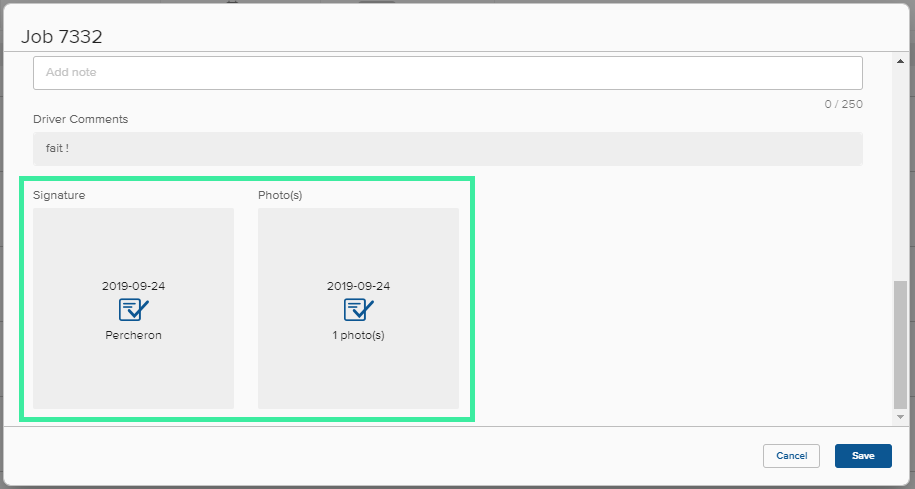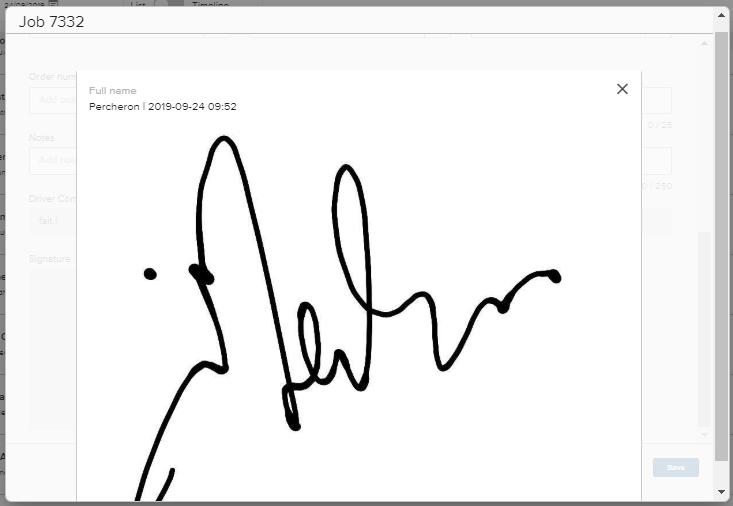Managing jobs with MyConnectedFleet Smart Job Management
MyConnectedFleet Smart Job Management set up
How MyConnectedFleet Smart Job Management works
MyConnectedFleet Smart Job Management uses the power of telematics data to help manage jobs within a fleet, from creation and scheduling to tracking and review. It’s a cohesive solution that provides better visibility and control over job status and scheduling, improves the end customer’s experience, and helps create a seamless workflow.

Setting up users
To access MyConnectedFleet Smart Job Management, users must be assigned a profile with an appropriate Role in MyConnectedFleet . There are usually three types of profile, each of which should have the following boxes checked in their Role. To change permissions, go to Settings, Alerts & Locations > More > Roles and Select 'features'.

Importing and creating jobs
Importing jobs
Existing jobs can be imported into MyConnectedFleet via a .csv file.
Click on the Job Management menu icon and then click on the ACTIONS button on the upper right side of the screen. Then select 'Import'.

This will open the Import Jobs page.

You can download a sample import file by clicking 'Download Template' (see example below).

‘Title’ and ‘Client Name’ are mandatory, and either an address or longitude / latitude information is required. Columns must be ordered as follows:

Once you have created your csv file, either drag and drop the file in the upload box or click the + SELECT button. Then click on START IMPORT.

Creating jobs
Jobs can also be manually created within MyConnectedFleet. Click + ADD JOB and then select either 'New single job' or 'New Multiple job' and then fill in the fields as necessary. Note: the ‘Group’ field limits the job’s visibility to Connect users who have corresponding access rights. It defaults to the top hierarchy, but it can be easily reassigned.

Assigning and scheduling jobs
Assigning jobs
Jobs can be assigned to a driver or vehicle. Once a job is assigned, the details will be dispatched to the associated driver via the SmarterDriver app, and its progress will be tracked in MyConnectedFleet. If jobs are already assigned in an existing job management platform and imported via API or .csv, they will be automatically assigned to the corresponding drivers/vehicles.
To manually assign or reassign a job (including jobs that have been imported):

- Click on the job
- Click on EDIT
This will open the Job page.

- Click the down arrow in the Assignee field to open the selection list of drivers/vehicles that are set up to accept jobs
- Select the new Assignee
- Click SAVE
Scheduling jobs
The job list shows key information, including scheduling details and who jobs are assigned to. From here, any job can be edited by clicking on it. If a job is created but unscheduled, planned arrival and duration times can be added at any point.

Tracking, proof of delivery and exporting jobs
Tracking jobs
Once a job has been assigned and scheduled for a specific date, it will be automatically tracked for actual arrival and departure times.
- Actual arrival time is triggered when a driver/vehicle arrives within a 218 yards radius of the job address and the engine is turned off.
- Actual departure time is triggered when the driver turns the engine on and leaves the 218 yards radius of the job address.
- If a driver leaves the job location to pick up parts, they will need to manually update the job status to reflect they are still on the job.
Drivers are also able to manually record a job’s start and end time through the SmarterDriver app. This time will take precedence in MyConnectedFleet, but the automated time will still be available to view.
Actual arrival and duration is compared with scheduled arrival and duration times to reveal whether jobs are running to plan. This information can be viewed on the job list.
Clicking on the job status will reveal a simple audit trail of the job history, including job creation, progress and if any edits were made.

This is a workflow featuring every possible job status:

List of MyConnectedFleet On Time job statuses:
- New: job created without assigned asset
- Assigned: job created AND assigned to a vehicle or driver
- Accepted: job manually accepted by driver via the SmarterDriver mobile app
- In Progress: Driver/vehicle has an end of journey event within a 218 yard radius of the job address
- Visited: Driver/vehicle has left the 218 yard radius of the job address after In Progress
- Missed: If an Assigned job has not switched to In Progress, Visited, or Cancelled within 30 minutes after the arrival window end + job duration, then the status will automatically update to Missed. Missed can still go to In Progress if the asset visits the location
- Cancelled: job manually cancelled by driver or manager (or API)
Proof of delivery
Using the SmarterDriver app, drivers and workers can capture customer signatures and take photos as proof of delivery or attendance.
Any job that has this information attached can be easily seen in the job list by the icons next to the job number. To view the customer signature or attached photos, click the job number.

Clicking the job number will open up all the job details, including signatures and photos attached. Click on either to view the signature or photo.



Exporting jobs
All job data can be exported as a .csv file via the 'Export' button. This can be used to run reports on job efficiency within a fleet.

For example, compare planned arrival times with actual arrival times or view which drivers are most frequently late or on time.
Our API is also able to directly feed job information from Connect back into an external job management system.
Sharing your driver's Estimated Time of Arrival with your customers with SMS and email notifications.
Keeping your customers in the loop and making sure they know when your driver will arrive can significantly boost your operations productivity and help you cut costs due to last minute rescheduling.
With the Smart Job Management Plus add-on feature, you can set up customized email notifications that will keep your customers informed about the progress of their scheduled job.
With the Smart Job Management Plus with SMS add-on feature, you can provide a mixture of email notifications and/or SMS notifications to keep your customers informed about the progress of their scheduled job. You can even set up a "How was my experience" notification that will allow you to get feedback from your customer.
For more information on the Smart Job Management Plus and Smart Job Management Plus with SMS add-on features, contact your MyConnectedFleet account manager.
